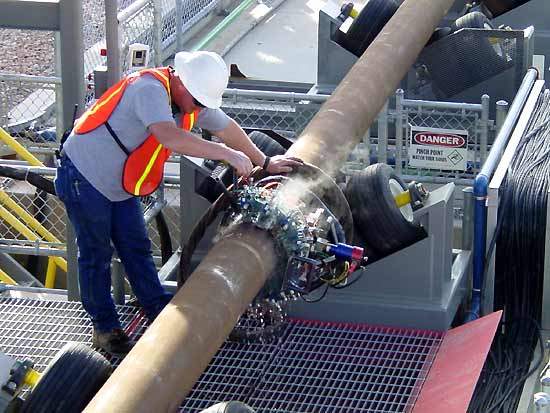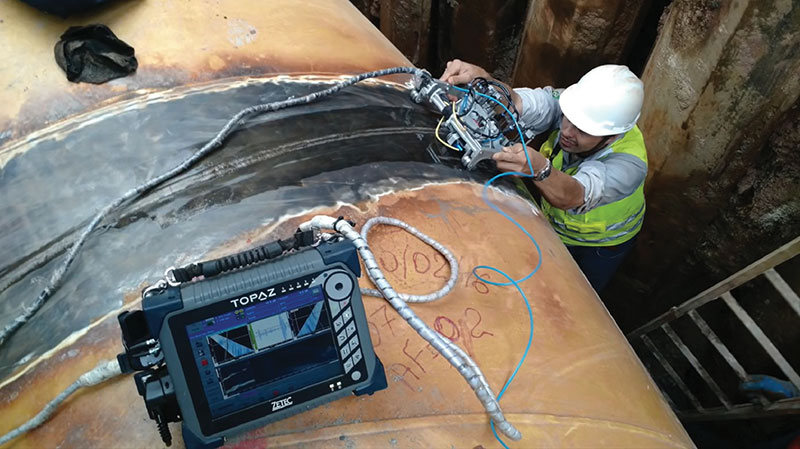Professional Pipeline Welding Inspection Services: Making Sure Safety And Security and Conformity
Professional Pipeline Welding Inspection Services: Making Sure Safety And Security and Conformity
Blog Article
Comprehensive Summary of Pipeline Welding Inspection Procedures
Pipe welding examination procedures play a critical function in guaranteeing that welded connections meet strict sector requirements and specs. From meticulous pre-welding inspections to thorough post-weld evaluations, a well-defined examination process is essential for preserving the architectural sturdiness of pipelines.
Pre-welding Examination Preparations
Prior to beginning the welding process, thorough pre-welding inspection prep work are essential to ensure the honesty and high quality of the weld joint. These preparations involve a meticulous examination of the products to be bonded, the welding tools, and the job atmosphere. By performing comprehensive pre-welding examination preparations, possible concerns can be recognized and settled early on, leading to premium and trusted weld joints.
Welding Treatment Certification
Thorough pre-welding inspection prep work lay the structure for the important process of Welding Treatment Qualification, making certain the integrity and high quality of the weld joint. Welding Treatment Qualification (WPQ) is a crucial action in the welding process that involves testing and accrediting welding procedures to assure they meet details standards and needs. The WPQ procedure normally includes welding procedure requirements development, welding procedure certification screening, and paperwork of the results.
During welding procedure specification advancement, crucial details such as the welding process, welding products, joint design, and welding criteria are defined to produce a thorough procedure. Consequently, welding treatment certification screening is conducted to verify the suggested treatment's integrity. This screening often includes welding examination promo codes that go through various mechanical and non-destructive tests to analyze the weld's top quality and adherence to the specified standards.
In-process Weld Examination
During the welding process, in-process weld assessment plays a crucial role in making sure the high quality and integrity of the weld joint - Pipeline Welding Inspection. This kind of evaluation entails monitoring the welding parameters, analyzing the weld bead formation, and discovering any type of prospective flaws or interruptions as they take place. By performing in-process weld examinations, welding drivers can without delay address any kind of concerns that might develop, consequently stopping additional issues and making certain that the last weld fulfills the needed specs
Typical approaches utilized for in-process weld evaluation consist of visual examination, liquid penetrant screening, magnetic fragment screening, ultrasonic screening, and radiographic screening. In general, in-process weld examination is vital for keeping the high quality and reliability of welded pipelines.
Non-destructive Testing (NDT)
Non-destructive Screening (NDT) is an important method utilized in pipe welding evaluation to examine the honesty of weld joints without creating damage to the bonded framework. By using different NDT strategies, examiners can evaluate the quality of welds and determine any kind of issues or suspensions that may endanger the structural stability of the pipeline. Typical NDT techniques used in pipeline welding assessment consist of Radiographic Screening (RT), Ultrasonic Screening (UT), Magnetic Fragment Testing (MPT), Fluid Penetrant Screening (LPT), and Visual Screening (VT)
RT involves the usage of X-rays or gamma rays to generate photos of the interior structure of the weld, permitting assessors More about the author to find issues such as porosity, cracks, or insufficient fusion. Additionally, VT entails visual evaluation of welds to determine any visible flaws.
Post-weld Examination and Paperwork

Paperwork of post-weld inspection findings is vital for maintaining quality assurance records and ensuring conformity with industry requirements and regulations. Thorough reports should include details about the examination techniques made use of, the location and nature of any kind of defects discovered, and any kind of corrective activities taken - Pipeline Welding Inspection. Proper paperwork not just works as a document of the weld's quality however additionally help in future maintenance and assessment procedures
Final Thought

In final thought, pipe welding assessment treatments play a crucial role in guaranteeing the high quality and stability of welds. On the whole, adherence to appropriate assessment procedures is crucial to the success of pipe welding tasks.
From thorough pre-welding inspections to detailed post-weld analyses, a distinct assessment procedure is crucial for keeping the architectural sturdiness of pipes. By performing in-process weld get more assessments, welding drivers can quickly deal with any type of issues that may arise, thereby avoiding further defects and guaranteeing that the last weld satisfies the needed specs.
Common approaches utilized for in-process weld assessment include visual examination, fluid penetrant testing, magnetic fragment testing, ultrasonic testing, and radiographic screening.Non-destructive Screening (NDT) is a critical approach employed in pipe welding evaluation to assess the stability of weld joints without triggering damage to the bonded structure. Post-weld inspection involves different methods to analyze the welds for flaws, including aesthetic inspection, dye penetrant testing, magnetic fragment testing, ultrasonic screening, and radiographic testing.
Report this page